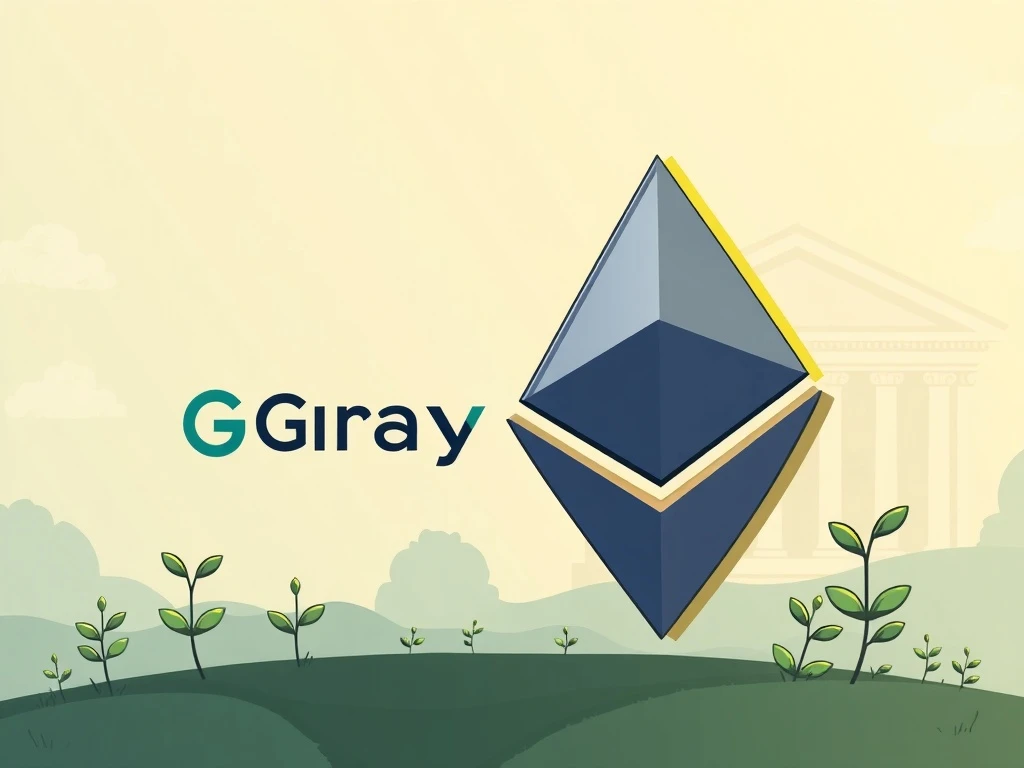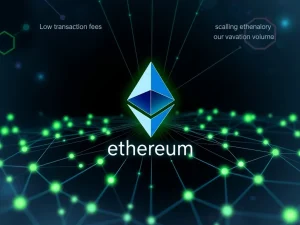Ethereum Staking: Grayscale’s Pivotal Move Ignites Optimism for Spot Ether ETFs

Grayscale is making a truly pivotal move in the cryptocurrency world. They are preparing to stake a significant portion of their Ether holdings. This action signals growing confidence within the industry. It also suggests a shifting stance from the U.S. Securities and Exchange Commission (SEC). This development could fundamentally redefine the landscape for Ethereum staking, especially for institutional investors.
Grayscale’s Strategic Move in Ethereum Staking
Onchain data from Arkham Intelligence recently revealed Grayscale’s strategic preparations. The firm transferred over 40,000 Ether (ETH) on Thursday. This activity is highly consistent with positioning for staking rewards. If confirmed, this would mark a significant first. Grayscale would become the initial U.S. Ethereum ETF sponsor to stake its holdings. This sets a new and important precedent for the market.
Grayscale’s commitment to Ethereum is evident in its substantial portfolio. Its Ethereum Trust (ETHE) manages more than 1.06 million ETH. This vast amount is valued at over $4.8 billion. The firm initially launched ETHE in 2017 as a private placement vehicle. In 2024, they further expanded their offerings. They rolled out the lower-cost Ethereum Mini Trust (ETH) through a partial spin-off of ETHE’s assets. These moves highlight Grayscale’s long-term vision for Ethereum. Furthermore, they demonstrate a proactive approach to evolving market opportunities.
Navigating the Evolving SEC Stance on Spot Ether ETFs
The path to incorporating staking into regulated investment products has faced regulatory hurdles. The US SEC previously delayed rulings. These rulings concerned whether Grayscale funds could incorporate ETH staking. However, the regulatory environment has shown signs of evolution. The regulator has since provided additional clarity. They indicated that some forms of liquid staking may not fall under its jurisdiction. This particular clarification opens a crucial door. It allows potential adoption by regulated funds. This development is a significant step forward.
Grayscale has already filed proposals. These aim to enable staking within its products. The SEC has not yet officially approved these proposals. Nevertheless, Grayscale’s recent transfer suggests proactive positioning. The company appears to be anticipating a favorable ruling. Currently, no existing Spot Ether ETFs include staking features. This makes Grayscale’s potential move even more groundbreaking. It could lead to a competitive advantage. This also encourages other asset managers to explore similar strategies.
Unlocking Value Through ETHE Staking Rewards
Analysts have consistently championed the approval of staking within US spot Ether ETFs. They argue it could ignite a new wave of institutional demand. Investors could earn rewards. This is a more active approach than simply holding the asset passively. Markus Thielen, head of 10x Research, articulated this sentiment clearly. He told Crypto News Insights in July that staking for ETHE staking could “dramatically reshape the market.” His perspective underscores the transformative potential.
Staking on the Ethereum network offers several compelling benefits:
- Passive Income: Stakers earn rewards for participating in network security.
- Network Security: Staked ETH helps secure the blockchain.
- Increased Utility: ETH becomes a productive asset, not just a store of value.
- Enhanced Appeal: The ability to earn yield makes ETH more attractive to traditional investors.
This mechanism is crucial for network integrity. Furthermore, it offers a yield on held assets. This makes Ether a more compelling investment. It combines capital appreciation potential with ongoing income generation.
Boosting Institutional Adoption with Grayscale ETH
Demand for Ether has significantly accelerated this year. Spot ETF inflows have surged across the crypto market. Concurrently, the amount of ETH held on exchanges fell. It reached a three-year low in early September. This decline is largely attributed to two factors: corporate treasuries and ETFs. These entities are actively absorbing available supply. This absorption impacts market dynamics. It signals a shift from speculative trading to long-term holding.
The Arkham-tracked transfer followed another notable SEC approval. Just a day earlier, the SEC approved the Grayscale Digital Large Cap Fund. This is a multi-asset crypto ETP. It offers diversified exposure to Bitcoin (BTC), Ether, XRP (XRP), Solana (SOL), and Cardano (ADA). This product allows investors to gain broad crypto exposure. They avoid directly purchasing individual tokens. This approval shows a broader trend. It signals increasing regulatory comfort with crypto products. Grayscale ETH products, therefore, remain at the forefront of this institutional push.
The Future Landscape for Ethereum Staking and ETFs
The potential for Ethereum staking within ETFs is immense. It bridges traditional finance with decentralized opportunities. This integration could bring significant new capital into the crypto ecosystem. It also further validates the underlying technology. Regulatory clarity remains the ultimate key. Such a development would likely increase liquidity. It would also enhance market stability. Investors gain more sophisticated options. They can participate in the Ethereum ecosystem in new ways. This marks a new era for crypto investments, blending innovation with regulation.
The integration of staking into regulated products could also foster greater market efficiency. It provides a clearer pathway for institutions. They can engage with decentralized finance (DeFi) primitives. This move by Grayscale is not merely about staking. It is about legitimizing a core function of the Ethereum network. It brings it into the regulated financial fold. This could inspire other asset managers. They might also explore similar yield-generating strategies for their crypto offerings. The implications extend far beyond Grayscale itself.
Grayscale’s proactive steps are noteworthy. They could pave the way for a new chapter in crypto investing. This chapter involves regulated Spot Ether ETFs with staking capabilities. The industry watches closely. Further regulatory decisions will undoubtedly shape this promising future. This move represents a significant leap towards mainstream acceptance and utility for digital assets.








